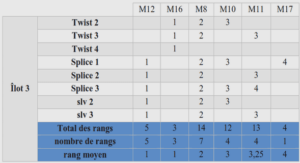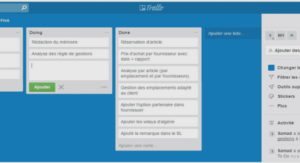Asteroseismology (all four partners)
During the past few years, asteroseismologists of the Instituut voor Sterrenkunde of the K.U.Leuven, of the Institut d’Astrophysique et de Géophysique of the ULg, of the Royal Observatory of Belgium and of the Observational Astronomy Group of the VUB have very successfully collaborated on many different topics in asteroseismology (we refer to the publication list in the annual reports of the previous IUAP). This implies the participation of all the members of the Belgian Asteroseismology Group (BAG). The BAG was founded in 2000 with the specific aim to coordinate all the Belgian initiatives and expertises in asteroseismology, in order to orient the relevant researches towards the upcoming data of pulsating stars from space. It mostly concerns CoRoT, a French-led European mission, which is in full preparation at present, with launch foreseen in 2006 and lifetime of about two years. Several members of the BAG are involved in the development of this mission.We describe below some of our past, current and most important activities. We limit ourselves to the results obtained through collaborations between at least two AIP Institutes.
Due to page limitation, we do not list scientific results obtained by individual IAP Institutes, although they led to numerous and important publications. A few important results from the collaborations are given by the publication list and the various PhD theses. The authors’ lists as well as the PhD jury members reflect the partnerships between the different IAP Institutes.H&H solar type star – In the context of the preparation of the CoRoT space mission, « hare-hound » exercises were independently performed by several teams of the CoRoT Seismology Working Group. The aim of such exercises, which are commonly used in helioseismology, is to prepare the data analysis and scientific interpretation of the asteroseismic CoRoT observations. This will help in the development and testing of the tools which are needed for the interpretation. The exercise was divided in four consecutive steps, each performed independently by a different group:For the CoRoT Week 3, which was organized in Liège in December 2002, we joined the « hare and hound » exercice at step 4, from a different angle than the other teams. We compared our numerical stellar evolution code and our oscillation code to those used by other (French) teams. By comparing the results of different « theoretical » codes, it is possible to get an estimate of the « theoretical uncertainty » on the results. This is of course essential for the interpretation of the future seismic data. We found that for the solar-type star chosen for the exercise, we had an almost perfect agreement with the results of the French Team, at least for the evolutionary track of that star in the HR-diagram, and for the oscillations of the star. We had to use slightly different parameters for the star. This will need more in-depth analysis.
H&H Cephei stars – We have performed two BAG CoRoT H&H exercises for B stars, the results of which have been presented at the 4th CoRoT Week held in June 2003 in Marseille. The conclusion of the CoRoT team was that a Beta Cephei star should indeed be included in the primary targets of the CoRoT mission.A seismic modelling of the massive star 16 Lac has been made. We have compared a new spectroscopic mode identification with a photometric identification based upon a non-adiabatic description of the eigenfunctions in the star’s atmosphere. Numerous theoretical models have been computed in order to select the best model fitting the observed frequency values as well as the mode identifications. The derived mass is 9.62 M with an age of 15.7 million years. Crucis – We have obtained photometric data assembled by the NASA space mission WIRE of the Cephei star beta Crucis (Mimosa). A total of 5 million observations covering 17 days was analysed and the three main periods found in this way are in perfect agreement with the results derived earlier from line profile variations. The photometric amplitudes are small (3, 2.7 and 0.6 millimag for the dominant modes), but this is not surprising in view of the mode identifications derived earlier from the line profiles.
Additional periods of low-amplitude modes (between 0.2-0.3 mmag) are also derived, including one suggested earlier by the radial velocity data. Centauri – We have performed an observational study of the orbital motion and the intrinsic variability of the double-lined spectroscopic binary Cen. Using 463 high signal-to-noise, high-resolution spectra obtained over a timespan of 12 years it is shown that the radial velocity of Cen varies with an orbital period of 357.0 days. We derive for the first time the orbital parameters of the system and find a very eccentric orbit (e=0.81) and similar component masses. Cen is a challenge for current evolution scenarios in close binaries and it is also a puzzle: how could a massive binary with such a large eccentricity have formed? The primary exhibits line-profile variations. A period analysis performed on the radial velocity variations of the primary after prewhitening the orbital motion leads to the detection of at least 2 pulsation frequencies while the star does not show any periodic photometric variability.



